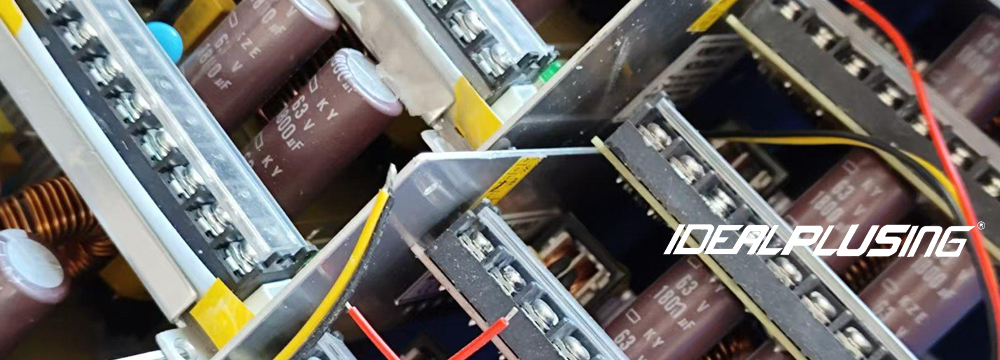There are many types of voltage stabilized power supplies. The series voltage stabilized power supply is composed of a power transformer, rectifier components, filter capacitors, adjustment components (adjustment tubes or Sanrui voltage stabilizers, etc.), reference voltage, sampling network, comparison amplifier, and overload or short-circuit protection.

Since the series voltage stabilized power supply belongs to a linear voltage stabilized circuit, and the adjustment tube is convenient for voltage stabilization.
Its disadvantages are high power consumption, low efficiency, and a small allowable grid fluctuation range. Generally, the series voltage stabilized power supply allows the grid fluctuation range to be (220±22)V. In order to reduce power consumption and improve efficiency, a switching voltage stabilized power supply is introduced.
The switching voltage stabilized power supply is usually called a switching power supply
It has the following:
1. The switching power supply directly rectifies and filters the grid voltage, and then stabilizes it by the switching adjustment tube. Therefore, no transformer is required.
2. The switching power supply generally uses power semiconductor devices as switches, and adjusts the output voltage by controlling the duty cycle of the switch. Taking the power transistor (GTR) as an example, when the switch tube is saturated and turned on, the voltage drop across the collector and emitter is close to zero.
When the switch tube is turned off, its collector current is zero, so the power consumption is small and the efficiency is high. The efficiency can be as high as 70% to 95%. The power consumption is small, and the heat sink is also reduced accordingly.
3. The switching operating frequency is tens of kilohertz, and the capacity of the filter capacitor and inductor used is small. Therefore, the switching power supply has the characteristics of light weight and small size.
4. Due to the low power consumption and low temperature rise in the machine, the stability and reliability of the whole machine are improved.
The power supply is divided into switching power supply and regulated power supply
There are differences between these two power supplies, but there are also similarities.
The switching power supply is a regulated power supply that is widely promoted in modern times. It has the characteristics of high efficiency, wide voltage range, stable output voltage, etc. It is now widely used.
For example, the ATX power supply of computers, laptop power adapters, printer power supplies, mobile phone chargers, etc.
The regulated power supply is that when the load power changes, the output voltage still maintains a fixed voltage value. The switching power supply is also a regulated power supply, but the regulated power supply cannot be directly called a switching power supply.
A voltage stabilizer is a power supply that uses an electronic circuit to output voltage to achieve stability. There are series voltage stabilizers, parallel voltage stabilizers, and switching voltage stabilizers.
Ordinary series voltage stabilizers are equipped with power transformers, which have the advantages of stable output voltage and small ripple, but the voltage range is small and the efficiency is low.
The output voltage of the parallel voltage stabilizer is particularly stable, but the load capacity is very poor, and it is only used as a reference inside the instrument.
The adjustment tube of the switching power supply works in saturation and cut-off states, so the heat generation is small, the efficiency is high (more than 75%), and the large volume of the transformer is saved.
However, the DC output of the switching DC voltage stabilizer will be superimposed with a large ripple (50mv), which can be improved by connecting a voltage stabilizer diode in parallel at the output end. In addition, since the working of the switching tube will generate a large spike pulse interference, it is also necessary to connect a magnetic bead in series in the circuit to improve it.
Relatively speaking, the DC voltage stabilizer does not have the above defects, and its ripple can be made very small (less than 15mv).
For places where power efficiency and installation volume are required, it is best to use a switching DC regulated power supply. For places where electromagnetic interference and power purity are required (such as capacitor leakage detection), linear DC regulated power supplies are often used.
In addition, when isolation is required in the circuit, most DC-DC is now used to power the isolated part (DC-DC is a switching DC regulated power supply based on its working principle). The high-frequency transformer used in the switching DC regulated power supply may be more troublesome to wind.
Weight comparison between switching power supply and regulated power supply
The switching power supply is relatively light in weight and small in size. The switching power supply adjusts the output power by the number or time of opening and closing the switch tube. The efficiency is higher than that of the linear regulated power supply, and the heat generation is relatively much smaller, but the dynamic response is poor, which is suitable for relatively stable load places.
The filter capacitor of the switching power supply has a high operating frequency, so it interferes greatly with the power grid.
The DC linear regulated power supply is relatively heavy, the filter capacitor is large, and the overall volume is large. The DC linear regulated power supply adjusts the tube voltage to reduce the output voltage, so the adjustment tube is heavily burdened, the heat generation is large and the efficiency is low. However, the dynamic response is very good, which is suitable for places with frequent load changes, such as audio power amplifiers.






